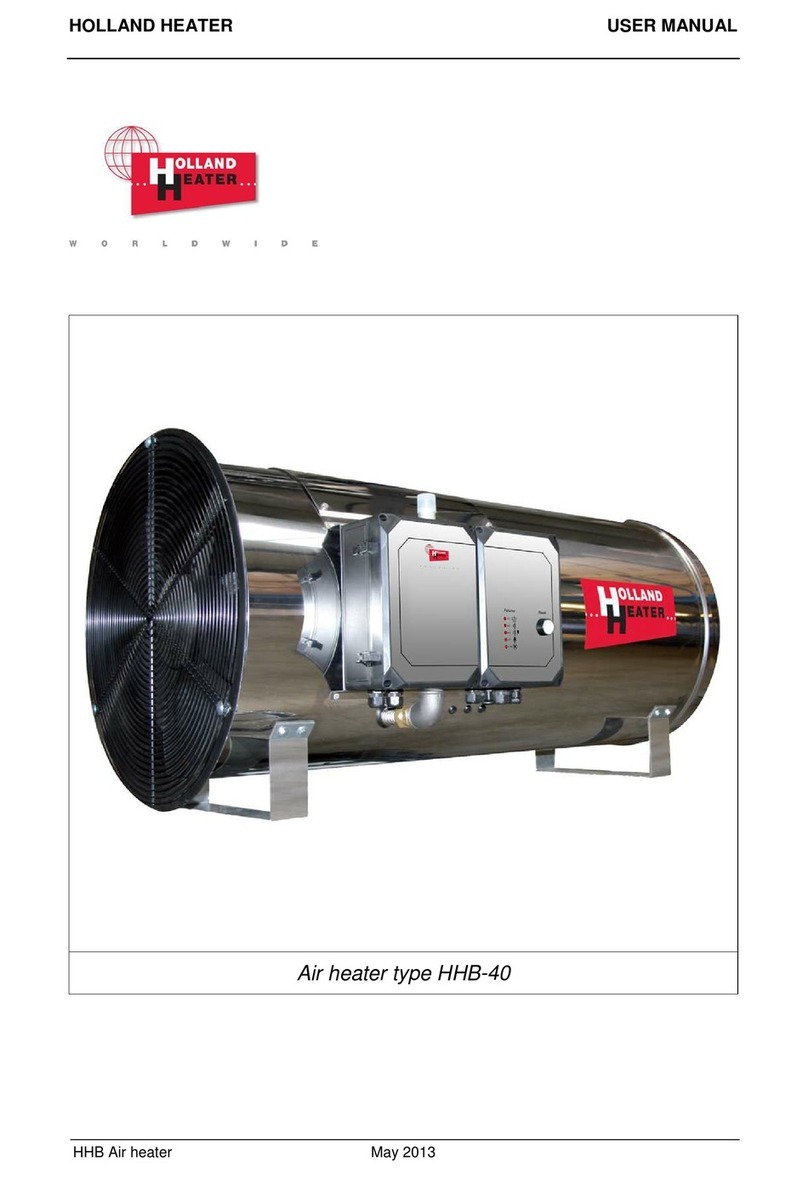Table of Contents
General information..................................................................................................................... 4
IDisclaimer.............................................................................................................................................. 5
II Product description ..............................................................................................................................5
III Used symbols...................................................................................................................................... 6
IV Identification of the air heater ............................................................................................................ 6
VOrdering spare parts.............................................................................................................................6
1Precautions and warnings ...................................................................................................... 7
2Technical specifications.......................................................................................................... 9
2.1 General product specifications ..........................................................................................................9
2.2 Main sections and components....................................................................................................... 10
2.2.1 The 8 and 10L versions .................................................................................................................. 10
2.2.2 Differences between 8-10L version and 12L version of the heater............................................... 11
2.5 Burner set........................................................................................................................................ 14
2.6 Oil atomising nozzle ........................................................................................................................ 15
2.7 Air inlet chamber............................................................................................................................. 16
2.8 Photocell ......................................................................................................................................... 16
3Installation .......................................................................................................................... 17
3.1 General............................................................................................................................................ 17
3.2 Connecting the oil supply ................................................................................................................ 19
3.2.1 The tank is higher than the heater ................................................................................................. 19
3.2.2 The tank is lower than the heater .................................................................................................. 19
3.2.3 Use of an extra oil pump ................................................................................................................ 20
3.2.4 Use of oil boxes .............................................................................................................................. 20
3.2.5 Mobile Heater with tank ................................................................................................................ 21
3.3 Oil lines ........................................................................................................................................... 23
3.4 Electrical connections...................................................................................................................... 24
4Operation............................................................................................................................ 26
4.1 First use (single pipeline system) .................................................................................................... 26
4.2 First use (return pipeline system) ................................................................................................... 27
4.3 Regular use...................................................................................................................................... 29
4.4 Room thermostat ........................................................................................................................... 29
5Maintenance ....................................................................................................................... 30
5.1 General............................................................................................................................................ 30
5.2 Cleaning........................................................................................................................................... 31
6Environment and discharge.................................................................................................. 33
6.1 Environment.................................................................................................................................... 33
6.2 Discharge......................................................................................................................................... 33
7.1 Burner controller response to failures ............................................................................................. 34
7.2 Burner relay status indicator ........................................................................................................... 34
7.3 Burner relay malfunction indicator.................................................................................................. 35
7.4 Malfunctions and potential solutions .............................................................................................. 36
Appendices ................................................................................................................................ 38





























